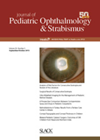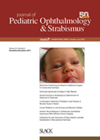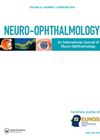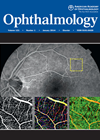
Journal Reviews archive for June 2014
Risk factor for surgical failure in consecutive XT
This study was designed to determine the success rate among patients with consecutive exotropia after choosing an appropriate surgical method based on medial rectus function and level of exo deviation. The authors conducted an interventional case series study of 40...
Cyclo spray vs. drops
The purpose of this study was to investigate whether cyclo spray is better tolerated than cyclo drops and to assess the adequacy of cycloplegia achieved by spray for objective refraction. Cyclo drops were given to 72 children and cyclo spray...
Normal values with Orbscan IIz corneal topography
This study aimed to establish a database of normative measurements of corneal typography in children aged 5-15 years with the Orbscan IIz corneal topography system. They assessed 100 eyes of 100 children. The mean SimK astigmatism was 0.69±0.35D. The maximum...
Risk factors for further surgery in consecutive ET
The preoperative and postoperative factors around first surgery for exotropia were investigated for predicting second surgery for consecutive esotropia. Fifty-two patients with consecutive esotropia after exotropia surgery were reviewed: 17 required surgery for the esotropia and 35 did not. There...
Strabismus in high myopia
The authors report the occurrence of exotropia-hypotropia complex in 15 cases of high myopia. The mean age at presentation was 23.5 years (10-35 years). Only two patients had high bilateral myopia. The mean axial length of the deviating eye was...
Risk factors for failed vision screening
Failure rates on vision screening tests were reported by age and racial / ethnic categories in a large sample of children with most aged 6-11 years. Many children resided in lower socioeconomic status areas. Data was taken from 9743 children....
DTI/MRI results in amblyopia
Diffusion tensor imaging (DTI) is an MRI technique that can evaluate white matter integrity and neuronal connectivity. Normal brain maturation and myelination are associated with reduced water diffusion and increased diffusion anisotropy. The authors aimed to evaluate the anterior optic...
An unusual case of sellar chondroma
A single case of chondrogenic neoplasm arising from the base of the skull is presented and discussed. These benign and slow growing tumours in the sellar region are extremely rare and as such this article provides a useful insight and...
Using frequency doubling technology perimetry to identify Alzheimer’s disease early
Alzheimer’s disease is widely reported to be associated with deficits in visual function. Visual disturbances include impaired stereopsis, contrast sensitivity and motion detection. Deficits specific to the magnocellular pathway (MGC) have been identified in Alzheimer’s disease. This article compares the...
An unusual case report of bilateral abducens paralysis
In this case report a nine-year-old girl develops bilateral abducens nerve paralysis, caused by vertebrobasilar dolichoectasia. Vertebrobasilar dolichoectasia is characterised by dilation, tortuosity and marked elongation of the vertebral and basilar arteries. Clinical findings result from the compression and displacement...
Antibiotic prophylaxis after intravitreal injections
The use of topical antibiotics as prophylaxis after intravitreal injections is a contentious issue, especially now with increasing use of intravitreal anti-VEGF agents. In the Wills Eye Institute, prior to May 2011, all patients undergoing intravitreal injections in the office...
Sutureless 27-gauge needle intrascleral intraocular lens implantation
The authors report on a prospective, non-comparative, interventional case series of patients undergoing sutureless intrascleral fixation of a posterior chamber three piece intraocular lens (IOL) using a 27-gauge needle for docking. Sutureless techniques have the advantage of not having complex...








